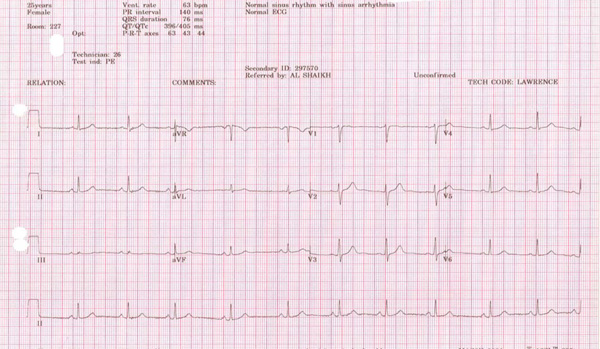All published articles of this journal are available on ScienceDirect.
Potentially New Indication of Ivabradine: Treatment of a Patient with Postural Orthostatic Tachycardia Syndrome
INTRODUCTION
The present report describes a female aged 25 years with postural orthostatic tachycardia syndrome (POTS). Her symptoms of weakness, palpitations, and tingling and coldness in her feet were completely alleviated with Ivabradine.
A woman aged 25 years who is otherwise healthy presented to our emergency department (ED) with a 2-week history of fatigue, palpitations and severe weakness on standing, which began after a febrile viral illness. She reported that after she stands she feels a racing of her heart followed by fatigue, numbness and tingling and coldness in her feet. On several occasions she fell to the floor without losing conciseness. Her physical examination was unrevealing: her baseline heart rate (HR) was 80 bpm and supine blood pressure (BP) was 130/76mmHg. Baseline blood analysis, thyroid function test and electrocardiogram, and echocardiogram were normal. In the ED, the patient was asked to stand, and after 3 minutes she felt weak and tingling and a cold sensation in her feet. Her HR rose to 139 her BP was 125/70 mmHg (Fig. 1). The patient laid down prior to collapsing from lower limb weakness. Head up Tilt table test was performed: after 5 minutes her HR increased from 75 to 140 without postural hypotension and recurrence of her symptoms was noted, the test was terminated. Her HR after active stand confirmed the diagnosis of postural orthostatic tachycardia syndrome (POTS) (HR increase of >30 bpm from baseline or reaching >120 bpm within 10 minutes of standing in the absence of postural hypotension [1]. The patient was started on Ivabradine 5 mg bid, and after 2 days her symptoms improved markedly and she was able to stand without weakness or tachycardia. Her HR on active stand averaged 80bpm. Four months later the patient ran out of ivabradine her symptoms recurred. We reinstituted ivabradine at a dose of 5mg twice daily which led to remarkable improvement in her symptoms.

Patient HR at baseline and after active stand.
DISCUSSION
POTS commonly occur between 15 and 50 years of age, and its prevalence is unknown [1]. However, in some reports it is suggested to be approximately 5 to 10 times as common as orthostatic hypotension [1]. In the past, multiple treatment modalities have been tried with limited success. The results with our case support 2 other case reports of the sinus node blocker ivabradine providing effective therapy for POTS [2, 3]. Randomized controlled trials are warranted to further evaluate its efficacy and safety.


